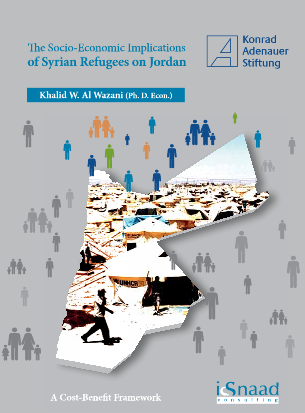
At the time the Syrian conflict is entering its fourth year, more than 2.6 million Syrians have fled their country. Jordan alone has opened its borders to almost 600,000 officially registered refugees. The negative economic implications are affecting Jordanians and Syrians alike with one of the results being social tensions. In this context, the importance of assessing the socio-economic impact of the refugees on the Jordanian economy from an all-encompassing point of view provided the incentive for this study, which aims to address the challenges but also the few opportunities presented by the continuous influx of Syrian refugees for the Jordanian economy.
It is meant to elaborate on the often untouched issue of aggregate (and sometimes particular) costs of the crisis on Jordan’s economy at large with specific reference to key sectors and the host communities. Previous studies have addressed the financial costs and the impact of the crisis on fiscal deficit, labor market or host communities. It seems, however, that the literature falls short of addressing both the positive and negative repercussions of the crisis on Jordan’s economy. What is new in this study is that it offers an integrated matrix of macroeconomic, sectorial and microeconomic impacts represented by the costs and benefits accruing to Jordan’s economy. The findings of the study have clearly shown that the burdens on the macroeconomic and microeconomic levels have outweighed all benefits enjoyed by the economy during the period 2012-2014.